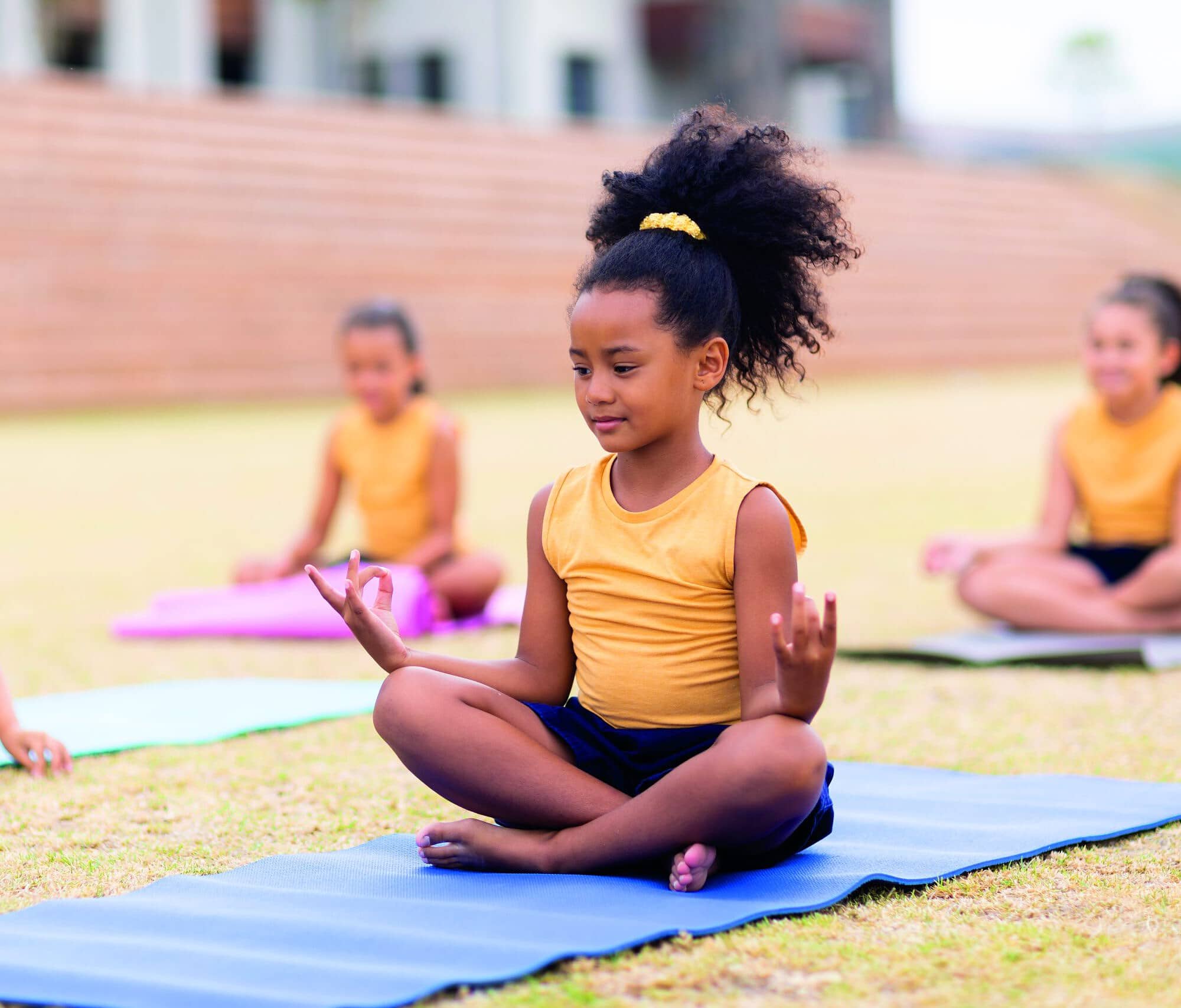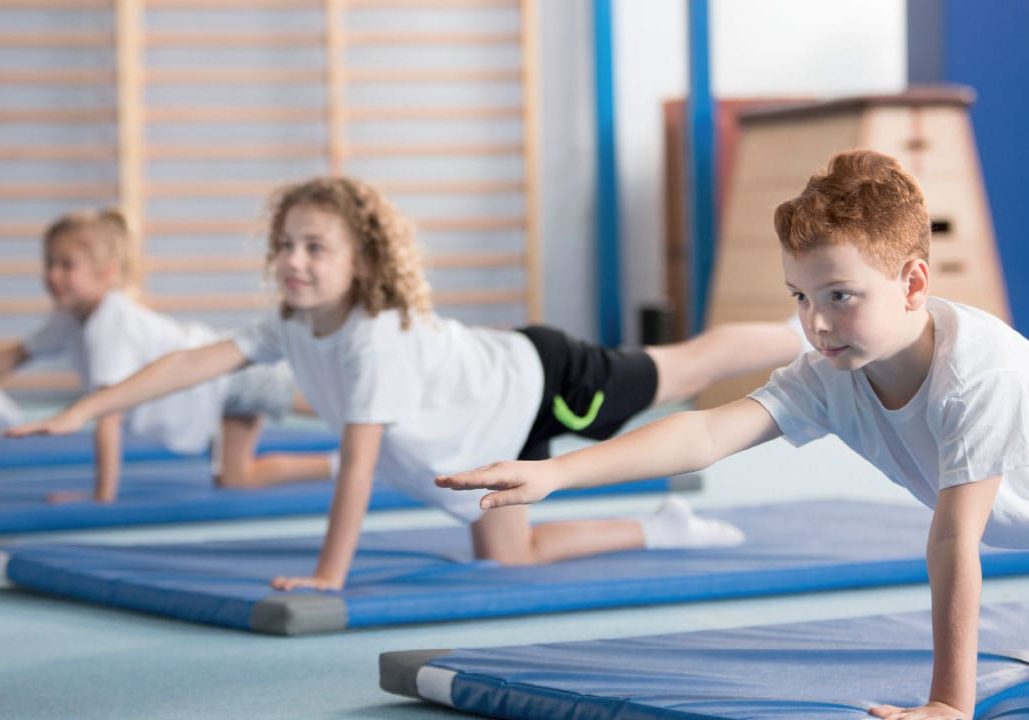Have you ever heard the phrase: ‘People forget the words you said to them, but they remember how you made them feel’? This is how I feel about children’s yoga. Children may not remember each pose or breathing technique they learnt in yoga class but they will remember how yoga made them feel. This is why it’s my mission to make the benefits of yoga accessible to all children — and the best way to do that is to share yoga within the school day.
The most obvious way to introduce yoga is within PE (Physical Education) lessons. Yoga provides a great contrast to a lot of the other games taught in PE classes. Yoga is a truly lifelong form of fitness and can be practiced anywhere, alone or together, with minimal equipment that teaches children transferrable and valuable life skills, boosting their physical and mental wellbeing in each class.
It broadens the PE offering of schools and helps to engage those children who are least interested in physical activity. There is a huge opportunity to use the wide-ranging benefits of yoga in schools to help children reach their full potential, supporting their mental health and wellbeing. Conveniently, yoga ties in well with the National Curriculum and helps schools meet a number of its goals.
Children aged five to seven are required to ‘develop balance, agility and coordination, and begin to apply these to a range of activities’. Yoga undeniably involves all of these skills. Yoga poses and flows help children explore the capabilities of their bodies and help them build their strength, balance, coordination, flexibility and confidence. Whilst many sports also help children reach these criteria, schools are expected to offer a broad range of physical education and including yoga is a way to attract those children who do not enjoy competitive sports or prefer to exercise alone.
Older children (eight to elevens) should ‘develop flexibility, strength, technique, control and balance’ and should also access ‘a broad range of opportunities to extend agility, balance and coordination, individually and with others’. Sharing poses with children is a great way to develop their fitness and yoga provides time to work alone without any competition, which makes it especially valuable. Partner and group yoga poses still provide an opportunity for collaborative learning but without the pressure of ‘letting the team down’ which so many children worry about in team sports.
I would also argue that yoga is much more inclusive than other PE offerings – after all, anyone who can breathe can practice yoga! Inclusivity is important to schools who usually have very diverse communities and therefore sharing yoga is an excellent way these establishments can show they are making exercise accessible to all.
Moving away from PE, schools are also required to ‘develop a pupil’s ability to make informed decisions about their wellbeing, health and self-efficacy’. Yoga provides a fantastic opportunity for this. We can learn about our health and how to maintain it and also give children the chance to look inwards, really notice their emotions and how they respond to them. Yogic values such as Ahimsa (no harm) and Satya (truthfulness) also allow children to reflect on their own beliefs around ethics and what is right and wrong.
“There is a huge opportunity to use the wide-ranging benefits of yoga in schools to help children reach their full potential, supporting their mental health and wellbeing.”
I don’t think mental health has ever been more prominent in school’s agendas than right now. In the aftermath of the pandemic, many children are struggling with anxiety or just generally struggling with the huge pressures our young people face. Yoga is an opportunity to switch off, to disconnect and to be present. Yoga is known to build focus which is another huge bonus for schools, where many teachers say lack of concentration in the classroom is one of the biggest barriers children face in their learning.
If yoga is such a great fit for schools why aren’t more schools including it in their curriculums? There are a few reasons but I think the biggest is simply a lack of awareness. Despite many children’s yoga teachers doing incredible work, children’s yoga still feels like an unknown to many. They worry children will be expected to silently follow a teacher’s instruction (in the style of an adult’s yoga class) and this still puts many teachers off sharing yoga. There is also sometimes a lack of understanding of how yoga is different from gymnastics and how to safely share yoga. Many teachers I have worked with have experienced the benefits of yoga themselves but simply never thought of sharing it with children.
The best advocates for children’s yoga are those who know how powerful the practice is. If you know a child, or work with children, I encourage you to share yoga with them. Talk about, or let them see, your own practice. Try to show how you incorporate breathing exercises into your own daily life. There is sometimes a fear around sharing yoga ‘wrong’ but in my experience, sharing the practices which help you most, the way you do them, is incredibly powerful. If you have connections with a school, speak with them about yoga. It might be that you are able to offer yoga classes yourself (if you are qualified and have the right insurance) or maybe you know somebody who is. If not, you can direct them to my website (see details below) where they can download my ‘yoga in schools’ information pack.
The gift of yoga to a child is immense. I have watched first-hand how yoga has changed the lives of the children I work with and find its impact is truly humbling. I urge you to spread that post-yoga feeling with as many children as you can – they won’t forget it!
Victoria Tso is a specialist children’s yoga teacher and experienced classroom teacher on a mission to make the benefits of yoga accessible to all children. Enjoy her resources, children’s bedtime yoga and learn about her school subscription on her website: innerchildyogaschool.com or follow her on Instagram @inner_child_yoga_school







